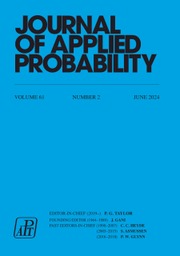Crossref Citations
This article has been cited by the following publications. This list is generated based on data provided by Crossref.
Liu, Qingwei
and
Privault, Nicolas
2025.
Normal to Poisson phase transition for subgraph counting in the random-connection model.
Electronic Journal of Probability,
Vol. 30,
Issue. none,
Liu, Qingwei
and
Privault, Nicolas
2026.
Gaussian fluctuations of generalized U-statistics and subgraph counting in the binomial random-connection model.
Stochastic Processes and their Applications,
Vol. 192,
Issue. ,
p.
104825.


